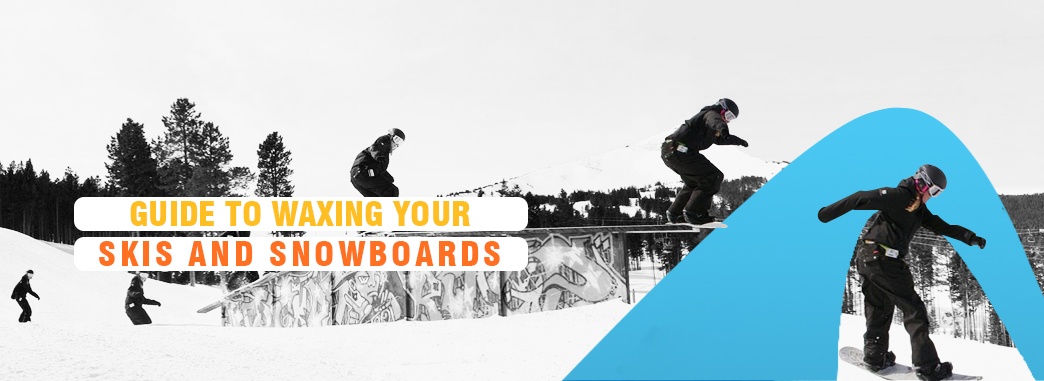 guide to waxing your skis and snowboards
guide to waxing your skis and snowboards
Guide to Waxing Your Skis and Snowboards
Posted
by
Matt Gahman
on Tuesday, March 5, 2019
Are you an avid skier or snowboarder? If so, you’re probably always looking for that next new piece of equipment, and anticipating your next opportunity to hit the slopes. But did you know the things you do between your skiing adventures are equally as essential to your success as the things you do up on the mountain?
While it might not be quite as exciting as the act of flying down a snowy hill, the job of maintaining and caring for your skiing and snowboarding equipment is a crucial part of staying safe and enjoying your experiences out on the slopes. If you aren’t putting in the work on your off-days to maintain your equipment, you never know when it might fail you.
To prevent this from happening to you and to help you get in the habit of regularly caring for your skis and board, we’ve put together this guide to waxing your snowboard and skis. Follow these tips, and you’ll soon be waxing your equipment like a professional.
Why Should You Wax Your Skis and Snowboards?
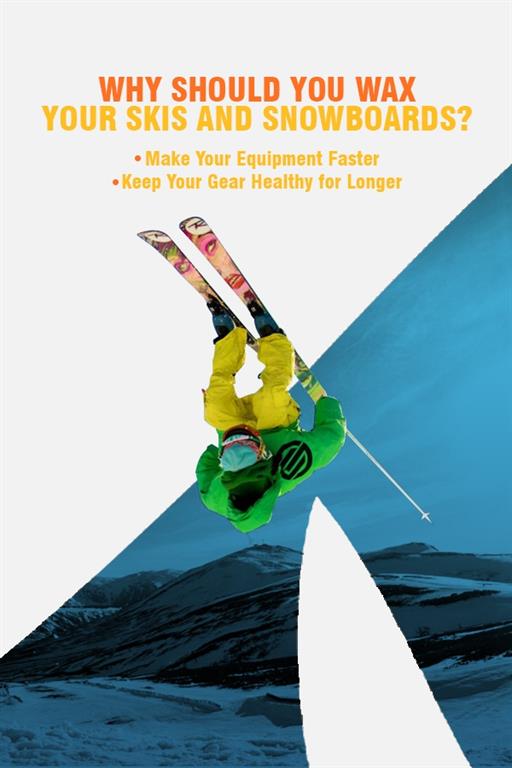
If you’ve already been skiing or snowboarding for a while without ever once waxing your gear, you may be tempted to scoff at the idea. You’ve never had any problems so far. What’s the big deal with waxing, anyway, and why can’t you continue to get along without it?
If this is what you’re thinking, you’re partially right. You’ll still be able to ski and snowboard without waxing, but it will enhance your experience if you do. Here are the top two reasons you should be waxing your gear.
1. Make Your Equipment Faster
No, the wax doesn’t change the composition or shape of the board to make it run faster. What it does is smooth the surface of your board or skis, making them move more quickly and smoothly through the snow, instead of catching on every rough edge and bump. Waxing is helpful even if you’re a beginner looking for a smoother downhill experience, and is certainly a plus if you’re more advanced and looking for some extra speed to help you make those tight turns and jumps.
2. Keep Your Gear Healthy for Longer
No matter what you do, your board will still inevitably run up against rocks, ruts and other bumps that can scrape and damage its surface. Wax can’t prevent that, but it can help heal the damage afterward. When you wax your board or skis after a hard day’s riding, it helps seal these tiny cracks and gashes and prevent them from drying out. That is crucial because if any of these wounds dry out, they’ll be more prone to delaminating and peeling apart. By regularly waxing, you can keep your board healthy for longer.
When Should You Wax Your Skis and Snowboards?
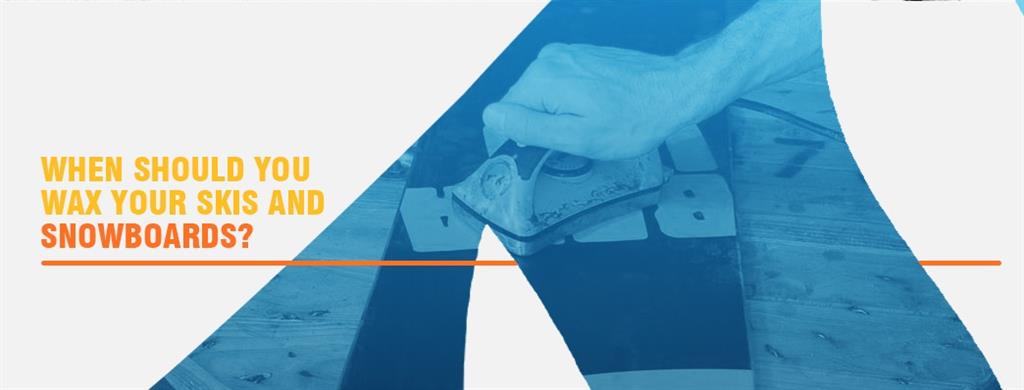
Advanced skiers and snowboarders often choose to wax their equipment after every session. Others may never wax their gear at all. Here are a few guidelines to help you decide when and how often you should perform this type of maintenance.
- If you notice your skis are starting to feel slower, less responsive and a little duller on turns, that may be a sign the wax coating is wearing thin and they need a tune-up. There are also several pocket-sized wax options that you can bring along with you to give your equipment a quick wax without having to take your gear to a local shop.
- Wax if you’re skiing or snowboarding in a new spot where the snow is noticeably wetter or drier than your usual skiing location.
- Wax if you begin to notice a gray chalk-like residue on the bottom of your skis or board.
- Wax more often if you snowboard or ski in icy or poor conditions as this will wear away your skis' wax faster than normal.
- If your skis have an extruded base as opposed to a sintered base, you’ll need to wax more often. That is because sintered bases retain the wax better than their extruded counterparts. If you aren’t sure which kind of base you have, check the specs on your skis or with your local shop to be sure.
- Always wax at the end of the season as this will prevent the snowboards and skis from drying out and peeling while not in use.
When in doubt, a good rule of thumb to remember is that you should probably wax most skis and snowboards every three or four times you take them out on the hill.
Should You Wax Your Brand-New Skis?
Alright, so now you have a slightly better idea of when to wax your skis. But what about when you purchase a brand-new pair? Should you wax them, or do they come with a coat of wax already on them?
The answer depends on how experienced you are as a skier. Almost all new skis come with a light coating of generic wax, and if you’re learning to ski for the first time, this is all you need for the first few sessions. If you’re an experienced skier, however, with plenty of practice under your belt and a good working knowledge of how to wax for different conditions, you'll take a different approach. In this case, go ahead and immediately wax your skis with a coating appropriate for the setting of your first session.
How to Prepare Your Snowboard or Skis Before Waxing
Waxing is crucial, but there are right and wrong ways to do it. If you take the wrong approach, you may end up causing more harm than if you’d left them without any wax at all. Before you begin the process of waxing, take a moment to properly prepare your equipment for the procedure.
For a pair of downhill skis, start by depressing the pedal to retract the brake. At this point, the brake arms will move up and become parallel with the skis. Use a rubber band to hook the arms together over the heel-piece and keep them safely out of the way while you wax. Complete this process with both skis before flipping the skis base-up and securing a ski vise clamp around the middle, so they don’t move around while you wax them.
For a snowboard, the process is more straightforward. All you need to do is rest the board on top of the vise to hold it still throughout the process. If you don’t have a clamp, try substituting a few stacks of books, which should do the job as well.
Finally, for both skis and snowboards, once they’re in the vise, it’s time to give them an initial wipe-down. Take a clean rag and moisten it with a little alcohol before using this to gently wipe down the surface and clean away all the dust and debris that may have collected along the skis or board. If the base is especially dirty, don’t be afraid to use a brush to clean away some of the most significant pieces of debris before applying the alcohol coating.
What Types of Waxes to Use
So now you’ve got a pretty good idea of when to wax your boards. You also know how to set up the process. The next question is what type of wax you’ll want to use. A glance at a sports store or online retailer will quickly reveal dozens of options. To someone with no experience in this area, this can easily be overwhelming.
The critical thing to realize when choosing wax for your snowboard is that there isn’t a one-size-fits-all solution. The reason there are so many choices is that some waxes are better suited to certain situations than others. To get the most out of your equipment, you’ll want to learn which kinds of wax to use when.
With this in mind, here are some of the most common types of wax you’ll encounter, as well as their various applications.
- Rub-on wax: Think of this as your quick-and-easy-fix wax. Let’s say you’re on a skiing trip, and on the third day, you start to notice your skis are slowing down and not handling as well. You conclude they need a wax, but now you have a problem: You don’t have the time, space or equipment with you to complete a full wax job. Here is where rub-on wax comes in handy. It isn’t long-lasting, and it won’t give you the highest-quality wax out there, but it will give you that quick performance jump you need for the final day of your trip.
- Hot wax: While a rub-on wax gives you that quick top-off you need, hot wax is all about quality and longevity. This longer-lasting wax will provide a much higher level of quality than something like a rub-on solution. These waxes are based on the temperatures they’re intended for, so the savvy shopper will need to have some idea of the conditions they’ll be heading out into before purchasing a wax. You can always simplify matters by choosing a universal hot wax, which will still last longer than a rub-on solution, but will not be quite as high-quality as a temperature-specific choice.
- High-performance wax: High-performance wax is an advanced option that likely goes far above and beyond the needs of casual skiers and snowboarders, although it isn’t off-limits in case you’re curious enough to give it a try. These waxes often come with extreme levels of fluorocarbon, which makes them more suitable for unusually wet snow and also makes them cost more than the average hot wax.
Tips for How to Wax Your Snowboard and Skis
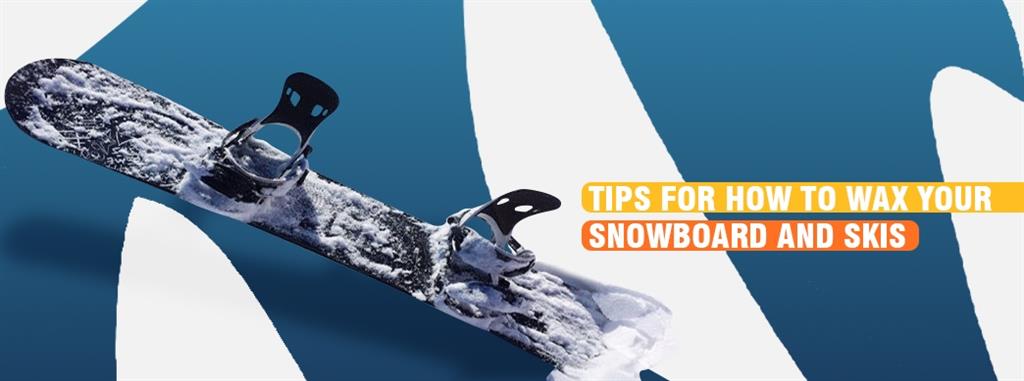
Finally, we come at last to the nitty-gritty process of how to use ski and snowboard wax. Because the rub-on wax we mentioned is extremely simple and needs very little explanation, we’re instead going to focus on snowboard and ski waxing tips for hot wax applications.
Before you get started, here’s what you’ll need.
- Waxing iron: You don't need to buy a fancy, wax-specific iron, although you can if you want to invest in that. Otherwise, any standard iron such as the kind you use to iron clothes will suffice. If you do use your household iron with wax, however, remember not to turn around and use it on clothes again, as the wax residue will ruin the fabric.
- Wax: Pick up or order the snowboard or ski wax of your choice.
- Plastic scraper: This tool will be handy at the end of the process, when you remove excess wax off the edges of the board.
Once you have these items assembled, and you’ve thoroughly prepped your boards or skis, it’s time to get started. Follow these tips for the best way to wax a snowboard or pair of skis.
- Power up the iron to the temperature specified on the wax package and wait for it to heat up.
- Take a chunk of wax in your hand and hold it to the base of the iron until it begins to melt and drip down onto the board. Keeping the wax against the iron, move both hands methodically up and down the length of the board or skis until the wax has melted and you have covered the entire surface with wax drips.
- Once the wax melts, place the iron on the board and iron it like you would a napkin or shirt. Work the iron from one end to the other, back and forth, smoothing the hot wax into place until the entire board has a flat and even coating. Be careful not to rest the iron in any single place for too long, or you may burn it. If you notice any areas that still seem too dry or thin, don’t be afraid to add a little more wax.
- Let the board sit to cool and dry, a process which may take between 30 minutes and an hour. Once it has cooled, use your scraper to scrape the visible wax off the board in long, smooth strokes. It may look like you’re undoing all your hard work, but don’t worry. The wax remains in the pores in the bottom of the board, and the extra wax that’s still visible on the surface is unnecessary.
A Few Extra Tips
In addition to following the steps specified here, don’t forget to try these extra tips for the best waxing job possible.
- Always wax in a well-ventilated space.
- Keep the iron hot enough that the wax melts, but not so hot you begin to see smoke.
- Whether you’re applying wax or scraping, always work from the tip to the tail to achieve the smoothest finish.
Know When to Let the Professionals Take Over
Maybe you’ve never waxed your equipment before, and are feeling nervous about doing it yourself. Maybe your skis are a unique case, and you know they need an extra touch of professional attention. Or, perhaps you trust the professionals have experience you don’t, and would rather leave big jobs like this to them. Whatever the case, there is always a professional available at Buckman’s Ski and Snowboard Shops to help you achieve the perfect wax job without the hassle of doing it yourself.
Are you thinking of calling and letting the professionals take over? Click here to learn more about our ski workshop services and pricing.
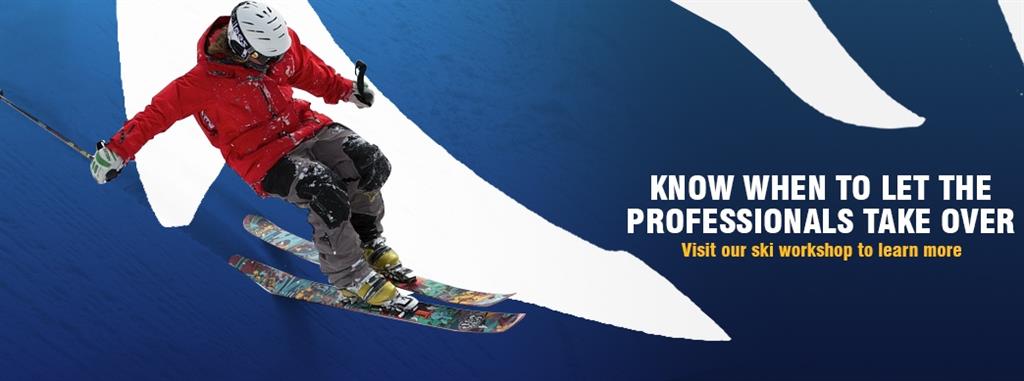
Categories:
Ski & Snowboarding Tips
Tagged: ski, snowboard